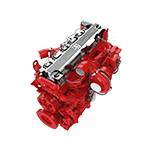Aug . 16, 2024 10:59 Back to list
Understanding the Causes and Effects of Warped Brake Drums in Vehicles
Understanding Brake Drum Warping Causes and Solutions
Motor vehicle safety relies heavily on the efficient functioning of its braking system. One critical component of this system is the brake drum, which plays a vital role in the deceleration of the vehicle. However, over time and with various driving conditions, brake drums can warp, leading to complications that can compromise safety. In this article, we will explore the causes of brake drum warping, the symptoms to watch for, and potential solutions.
What Causes Brake Drum Warping?
Brake drum warping occurs when the drum becomes irregularly shaped, which can hinder the braking efficiency of the vehicle. Several factors contribute to this problem
1. Excessive Heat One of the primary causes of brake drum warping is overheating. Braking generates a significant amount of heat, which is normally dissipated through the drum material. However, if the brakes are applied too frequently or for prolonged periods—such as during hilly driving or in heavy traffic—the heat can build up, causing the drum to expand and eventually warp.
2. Improper Installation If a brake drum is not installed properly, it can lead to uneven wear and stress. Misalignment can further exacerbate the heating issue, making it more likely for the drum to warp.
3. Worn Brake Components When parts of the braking system, such as brake shoes or pads, wear unevenly, they can apply irregular pressure on the drum, leading to warping.
4. Quality of the Brake Drum The material and manufacturing quality of brake drums can significantly impact their durability. Lower-quality materials may not withstand heat as effectively, making them more prone to warping.
5. Continual Excessive Weight Carrying heavy loads or towing can put additional stress on the braking system. Over time, this can lead to overheating and eventual warping of the brake drums.
Symptoms of Brake Drum Warping
It’s essential for drivers to recognize the signs of potential brake drum warping early to avoid more severe issues. Common symptoms include
can brake drums warp

- Vibration During Braking One of the most noticeable signs of warped brake drums is vibrations felt in the steering wheel or brake pedal when braking. This can indicate that the surface of the drum is not uniform anymore.
- Reduced Braking Performance If a vehicle takes longer to stop than usual, it may be a sign that the braking system is compromised due to warped drums
.- Unusual Noises Grinding or squeaking sounds during braking can also denote an issue with the brake drums, especially if caused by misaligned or worn components.
Solutions to Brake Drum Warping
If you suspect that your brake drums are warped, it’s critical to address the issue promptly. Here are some solutions
1. Professional Inspection Always start with a thorough inspection by a qualified mechanic. They can assess the condition of the brake drums and other components of the braking system.
2. Resurfacing If the warping is minor, resurfacing the brake drums may be a viable option. This process involves machining the drum surface to restore its uniformity.
3. Replacement In cases where the drums are severely warped or damaged, replacing them may be necessary. Always opt for high-quality parts to ensure better longevity and performance.
4. Regular Maintenance To prevent future issues, regular maintenance of the braking system—including checking brake pads, shoes, and drums—can help catch problems before they exacerbate.
Conclusion
Understanding the causes of brake drum warping is crucial for maintaining a safe driving experience. Being aware of the symptoms and addressing any issues promptly can help prevent accidents and ensure the longevity of your vehicle’s braking system. Always prioritize safety by keeping your braking components in top condition through regular inspections and maintenance.
-
ROR Web Development: Build Fast, Scalable, Secure Apps
NewsAug.17,2025
-
Scania Brake Drums: OEM Quality for Optimal Safety & Durability
NewsAug.16,2025
-
R.V.I: Advanced Remote Visual Inspection for Precision
NewsAug.15,2025
-
Discover HYUNDA: Innovative Vehicles, Equipment & Solutions
NewsAug.14,2025
-
R.V.I: Unlock Advanced Insights & Real-time Performance
NewsAug.13,2025
-
Kamaz Brake Drum: Durable & Reliable for Heavy Duty Trucks
NewsAug.12,2025
